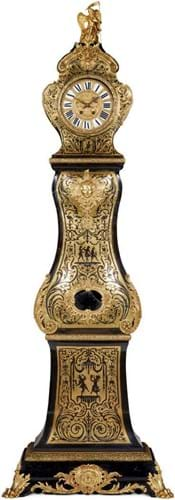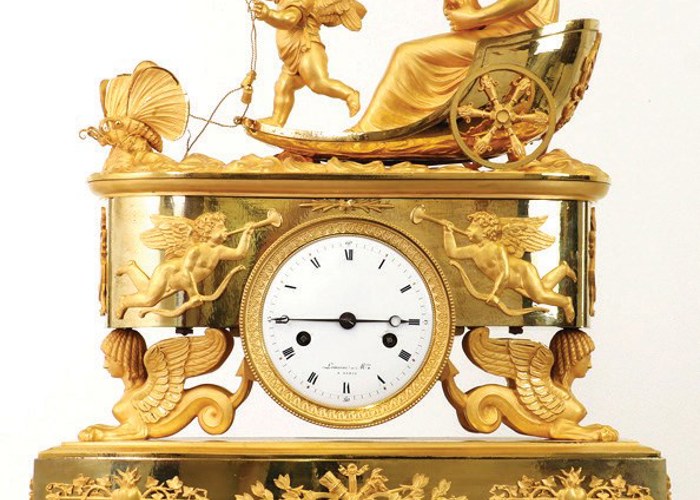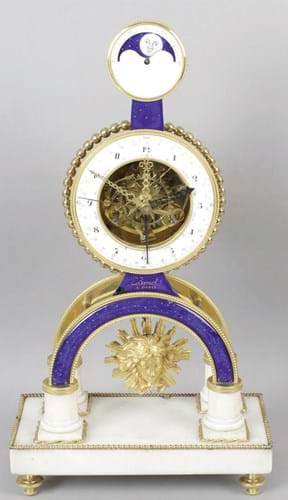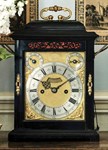There is also a perception that such clocks owe more to their casemakers and finishing rather than their horological underpinnings.
But this perspective can somewhat miss an appreciation for the skill of the sculptors, bronziers, gilders and clockmakers who contributed to these timepieces. Could this current view change?
Douglas Girton, head of furniture and works of art at Lyon & Turnbull, says: “Louis XIV clocks, plus later 19th century revival pieces are somewhat more in favour now. There has been a slight shift in the tide from the minimalist look to something more playful in interiors.”
So, it will be interesting to see if this translates into a higher profile at auction. What cannot be argued is fine quality of some French decorative arts clocks available on the market, including those which have come from cherished collections. A few such examples follow here.
Infrequent longcase
Lyon & Turnbull (26% buyer’s premium) offered a Louis XIV style boulle marquetry longcase clock as part of the Five Centuries sale in Edinburgh on September 1. Standing 7ft 6in (2.30m) high with a waisted bombé case after Jean Berain, the clock has an eight-day, bell-striking movement. It sold within estimate at £7000.
Girton noted: “This clock presented very well and was of good quality. French longcase clocks are not as frequently found. It needed some restoration, but the marquetry was in good condition. It sold to a private buyer.”
Ups and downs of Empire
Sworders (25% buyer’s premium) in Stansted Mountfitchet offered a group of four fine quality French Empire period bronze and ormolu clocks from the noted collector Jeremy Knight as part of the Fine Interiors sale on September 13-14.
The Empire style, an evolution of the neoclassicism of the 18th century, is heavily associated with Napoleon Bonaparte and many designs were symbolic of power and order.
It is probably indicative of the current market that only one was sold on the day.
This was an ormolu clock c.1810, modelled with the figure of Psyche being driven by Cupid in a chariot led by butterflies. The white convex enamelled dial is signed Lemoine with the 17in (43cm) high case fitted with a French silk suspension movement. Estimated at £3000-5000, it took £3200.
Brunel in Brum
The sale at Fellows (25% buyer’s premium) in Birmingham on September 14 included an early 19th century Brunel à Paris gilt ormolu, marble and enamel clock.
It has a skeletonised dial, a mechanism with zodiac and moonphase and a pendulum modelled as the face of the sun. The clock was in seemingly original condition, housed under a 21in (52cm) glass dome, with some areas of damage to the enamel. It got away at £4500.
Cressent creation
Christie’s will test the upper echelons of the French clock market as part of the sale Provenance Revealed: Galerie Steinitz sale in London on September 21. With an estimate of £120,000-180,000, a Louis XV ormolu cartel clock by the Régence period cabinet and furniture maker Charles Cressent (1685-1768) dates from c.1735.
The clock movement is by Pierre Le Roy, a celebrated clockmaker working in Paris in the 18th century. Once in the collection of Walter and Catalina von Pannwitz, renowned art connoisseurs, their collection was exhibited in 1947 in the Rijksmuseum in Amsterdam.
Christie’s notes that only three other examples of this late baroque-early rococo model are known, all with slight variants.

















